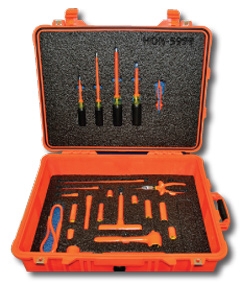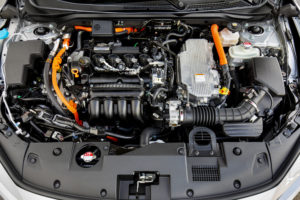A high-voltage (HV) vehicle has arrived in your shop for repairs, and you’ve accessed the OEM’s procedures for making a complete, safe and high-quality repair. What you may not have on hand are the specific tools that those procedures specify.
I-CAR’s Repairability Technical Support (RTS) team is on the job.
The RTS team has announced that it is researching how to find these necessary tools, to make technicians’ work easier. As the team digs through OEM resources to find the tools, it will be publishing a series of OEM-specific articles.
The series kicked off on Oct. 14, with the publication of HV tool information for Honda and Acura vehicles.
 The team’s guidance follows:
The team’s guidance follows:
Specialty tools for repairing HV vehicles can be found using the link for Tool & Equipment Programs – Online Catalogs (Honda) (Acura) on the service site home page. Once the link is open for either the Honda or Acura online catalog:
Click Equipment Catalog (top of webpage)
Click Hybrid Vehicle Specialty Equipment from menu
Click any of the categories under Hybrid Vehicle Specialty Equipment
This part of the equipment catalog provides battery lifting kits, insulated tools, and personal protection equipment.
When disabling Honda/Acura HV systems, the use of I-HDS may be required to find DTCs and faults in the high-voltage system. The I-HDS also allows the voltage to be checked after the service disconnect is removed.
Some HV disabling procedures also require the use of a high-voltage DVOM to check voltage after the HV system has been disabled. These tools can be found in the Honda/Acura Tool & Equipment catalog.

2021 Honda Insight
The new initiative is the latest undertaken by I-CAR to help technicians deal with the special challenges involved in repairing EVs.
In early September, I-CAR launched a comprehensive best practice guide for a high-voltage disconnecting procedure to guide repairers safely through what can be a highly dangerous process. On its website, I-CAR stresses that its best practice is meant to complement OEM procedures, and “does not take the place of any OEM procedures, OEM requirements or contribute to any OEM specifications of skills, tooling, training or equipment enabling a repair facility to work on high-voltage vehicles.”
In June, the organization announced the creation of “CHARGED for EV,” a resource to provide the inter-industry with a centralized information hub in support of the ongoing acceleration of EVs and their impact on the collision repair industry.
The no-fee resource, i-car.com/electric-vehicles, features news and information relevant to EV training, EV definitions, I-CAR EV course information and the latest EV topics and trends, including insights from EV Subject Matter Experts within I-CAR and the inter-industry. A free training course related to EVs is available at the site.
Technicians are reminded to always follow OEM procedures when repairing HV vehicles, and to make sure to check procedures for the required tools to help ensure a complete, safe, and quality repair.
More information:
Collision Information Website Access: Honda/Acura (I-CAR)
Hybrid And Electric Vehicle Article Hotspot (I-CAR)
Locating OEM-Approved HV Tools (I-CAR)
I-CAR offers best practice guide for disconnecting high-voltage EV batteries
Images:
Featured image: The engine compartment of a 2022 Honda Insight, showing high-voltage components in orange. (Honda)
An Insulated Tool Kit (1000 Volt Certified) – 22 Pieces, available through Honda’s online equipment catalog. (Honda)
A 2022 Honda Insight. (Honda)
Share This:
Related



